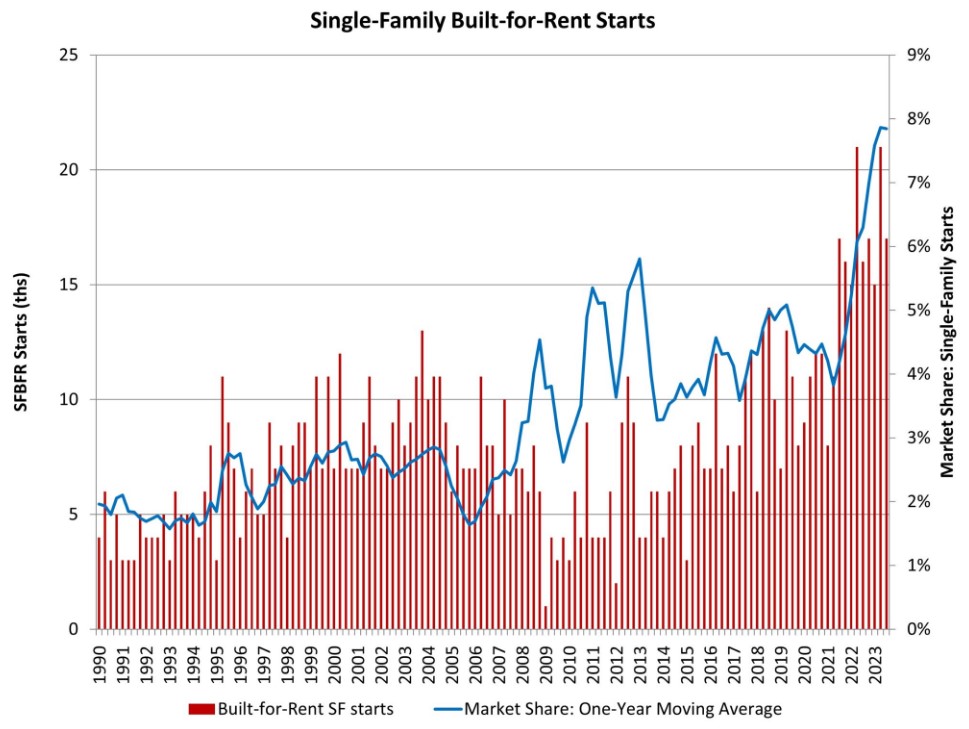Single-Family Build-for-Rent Remains Steady
Originally Published by: NAHB — November 20, 2023
SBCA appreciates your input; please email us if you have any comments or corrections to this article.
Single-family built-for-rent construction has cooled as investor interest has pulled back on tighter financial conditions, leading to flat construction conditions after recent gains.
According to NAHB’s analysis of data from the Census Bureau’s Quarterly Starts and Completions by Purpose and Design, there were approximately 17,000 single-family built-for-rent (SFBFR) starts during the third quarter of 2023. This is more than 6% higher than the third quarter of 2022. Over the last four quarters, 70,000 such homes began construction, which is almost a 3% increase compared to the 68,000 estimated SFBFR starts in the four quarter prior to that period.
The SFBFR market is a source of inventory amid challenges over housing affordability and downpayment requirements in the for-sale market, particularly during a period when a growing number of people want more space and a single-family structure. Single-family built-for-rent construction differs in terms of structural characteristics compared to other newly-built single-family homes, particularly with respect to home size. However, investor demand for single-family homes, both existing and new, has cooled with higher interest rates.
Given the relatively small size of this market segment, the quarter-to-quarter movements typically are not statistically significant. The current four-quarter moving average of market share (7.8%) is nonetheless higher than the historical average of 2.7% (1992-2012).

Importantly, as measured for this analysis, the estimates noted above only include homes built and held by the builder for rental purposes. The estimates exclude homes that are sold to another party for rental purposes, which NAHB estimates may represent another five to seven percent of single-family starts based on industry surveys.
Indeed, the Census data notes an elevated share of single-family homes built as condos (non-fee simple), with this share averaging more than 5% over recent quarters. Some, but certainly not all, of these homes will be used for rental purposes. Additionally, it is theoretically possible some single-family built-for-rent units are being counted in multifamily starts, as a form of “horizontal multifamily,” given these units are often built on a single plat of land. However, spot checks by NAHB with permitting offices indicate no evidence of this data issue occurring.
Nonetheless, demand by investors for single-family rental units, new and existing, has cooled in recent quarters as financial conditions have tightened. This will act to lower the share of homes sold to investors.
With the onset of the Great Recession and declines for the homeownership rate, the share of built-for-rent homes increased in the years after the recession. While the market share of SFBFR homes is small, it has clearly expanded. Given affordability challenges in the for-sale market, the SFBFR market will likely retain an elevated market share even as the sector cools.
